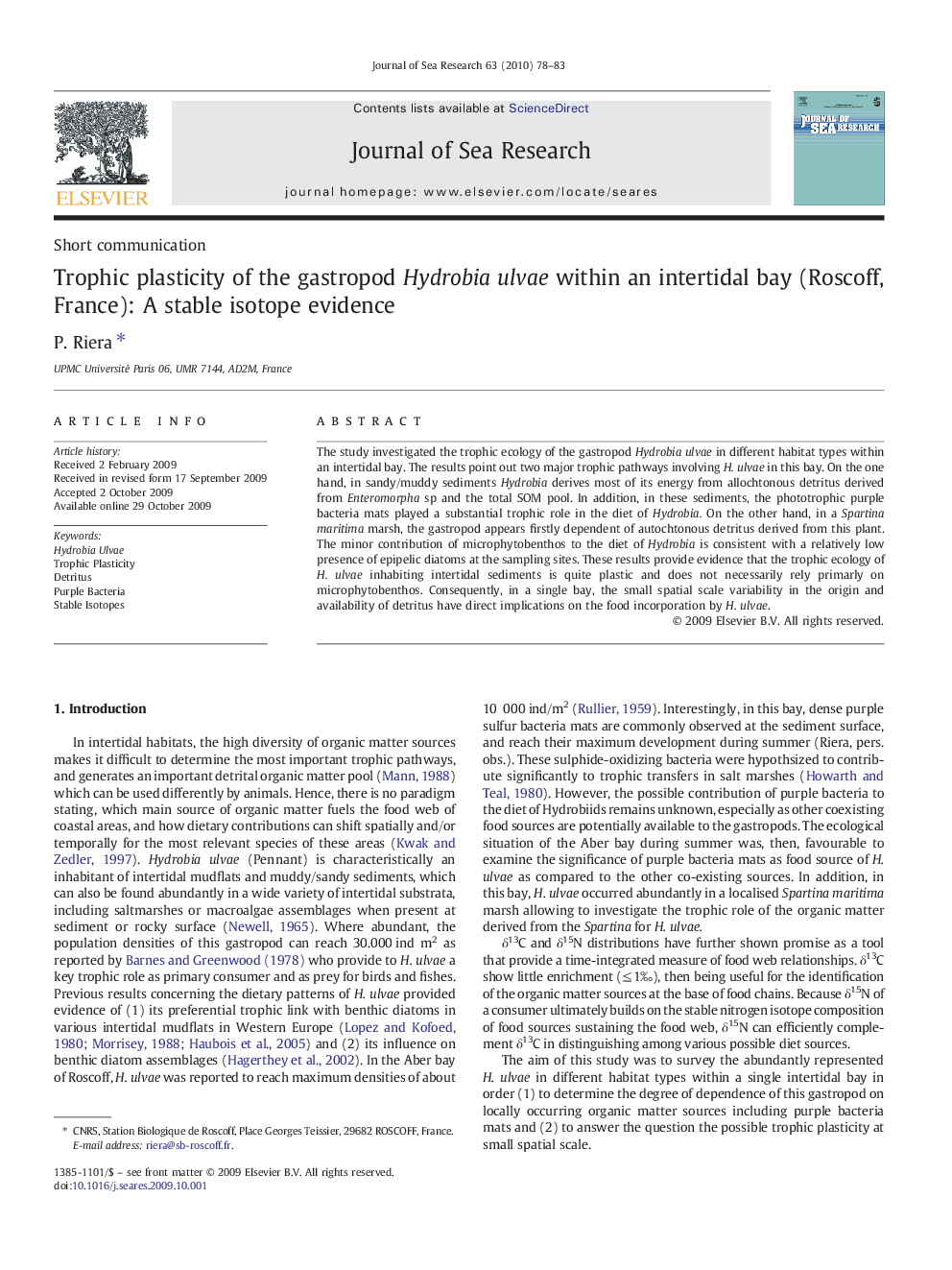| Article ID | Journal | Published Year | Pages | File Type |
|---|---|---|---|---|
| 4550268 | Journal of Sea Research | 2010 | 6 Pages |
The study investigated the trophic ecology of the gastropod Hydrobia ulvae in different habitat types within an intertidal bay. The results point out two major trophic pathways involving H.ulvae in this bay. On the one hand, in sandy/muddy sediments Hydrobia derives most of its energy from allochtonous detritus derived from Enteromorpha sp and the total SOM pool. In addition, in these sediments, the phototrophic purple bacteria mats played a substantial trophic role in the diet of Hydrobia. On the other hand, in a Spartina maritima marsh, the gastropod appears firstly dependent of autochtonous detritus derived from this plant. The minor contribution of microphytobenthos to the diet of Hydrobia is consistent with a relatively low presence of epipelic diatoms at the sampling sites. These results provide evidence that the trophic ecology of H.ulvae inhabiting intertidal sediments is quite plastic and does not necessarily rely primarly on microphytobenthos. Consequently, in a single bay, the small spatial scale variability in the origin and availability of detritus have direct implications on the food incorporation by H.ulvae.
